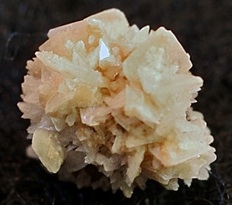Each year, more than half a million people will visit an ER with a painful kidney stone. Dr. Mark Allen, a Plano, Texas urologist (https://northtexasurologist.com) was interviewed for this article to shed some light on kidney stones and treatment options that are available today. This Q and A was designed as an informative document to help in the awareness and treatment, and prevention of Kidney Stones.

This kidney stone represents the hard mass of crystals that formulate the stone
A kidney stone is a crystallized mass caught within the urinary tract. When the chemicals found in urine are not strong enough to dissolve the stones they cannot pass through and out of the urinary tract causing a blockage and extreme pain for the patient. In many cases, the stones will eventually pass, but in other cases, medical treatment will be needed in order to break up or remove the stones.
Q: How common are kidney stones?
Kidney stones are relatively common. Approximately 7% of all women and 14% of all men will develop kidney stones. Once an individual has developed a kidney stone they have a 50% chance of recurring stones.
Q: What are kidney stone symptoms?
The most common symptoms associated with a kidney stone include pain in the back, and blood in the urine. But other symptoms may include: nausea, fever, and chills, as well as cramping, testicular pain and pain in the abdomen. Pain associated in the abdomen area is the prominent symptom of a kidney stone. It is a very distinct pain. Once a person has a kidney stone for the first time, they can easily recognize the pain each time the condition reoccurs.
Q: Who gets kidney stones?
Caucasian men are at the highest risk of getting kidney stones. This risk increases greatly between the ages of 40 and 70. Women can also get kidney stones but are at a decreased risk. Women over the age of 50 will be at a higher risk. It is extremely common for children to also get kidney stones. There is an increase in the United States of children getting kidney stones; diet and food/liquid in-take are the primary causes as many kids do not drink enough water and are eating foods that are high in salt and sugar.
Q: What kidney stones treatments are available?
Most commonly a patient should be able to pass the stones by increasing their intake of fluids, but if this does not prove beneficial there are other medical options to help a patient pass their stones. If a stone does not, in fact, pass on its own, the following treatments can be applied:
Extracorporeal Shock Wave Lithotripsy (ESWL for kidney stones), the Ureteroscopy Procedure and Percutaneous Nepheostolithotomy.
- ESWL stands for Extracorporeal Shock Wave Lithotripsy. ESWL for kidney stones is a high intensity acoustic pulse, sent from the outside of the body to the inside, used to break up the stone. Through the process the stones are broken down into smaller particles and can then be easily passed through the urinary stream. This is a non-invasive procedure that has time and time again proven productive. Extracorporeal Shock Wave Lithotripsy is one of the most frequently and widely used urological procedures to treat kidney stones. ESWL for kidney stones should be discussed with your urologist to see if it is the appropriate treatment for your specific kidney stone condition.
- Another minimally invasive procedure that is effective in eradicating kidney stones is a Ureteroscopy. During a Ureteroscopy procedure, incisions are not needed. Instead, a tiny scope is entered into the urethra and passed through to the bladder. If the stone is small it will gently be extracted through the end of the scope. If it is larger, then a laser may be required to dissolve the stone. The Ureteroscopy procedure varies according to the size of the stone and the severity of the pain.

Extracorporeal Shock Wave Lithotripsy (ESWL for kidney stones) is a high intensity acoustic pulse, sent from the outside of the body to the inside, used to break up kidney stones.
- Finally, when all other kidney stone treatments have failed, a Percutaneous Nepheostolithotomy can be performed to remove a large kidney stone. This is treatment for kidney stones is a surgery performed in the hospital in which an incision is made in the back and then special instruments are used to enter the kidney removing the stones. A catheter is necessary to drain the bladder during recovery, until the incision has healed. This surgery is used for large kidney stones, or when a kidney stone has caused an infection.
Q: If I have a family history of kidney stones, does that mean I am likely to get them?
There is statistical evidence to suggest that kidney stones are genetic—but if they run in you family, it does not necessarily mean you will get them. Certain factors such as age, diet, lifestyle, smoking, etc. can make the occurrence more or less likely.
Q: If I’ve had kidney stones before, what can I do to prevent them from reoccurring?
Have a metabolic workup. A metabolic workup is a study of the factors that likely caused your kidney stones and will likely cause a reoccurrence. In this study the kidney stone, your diet, urine samples, and overall health are studied to determine the factors that will most likely cause another stone. This is of utmost importance. Statistics show that 70% of people who choose not to have a metabolic workup receive another stone in 5 to 10 years.
The severity of kidney stones varies from one person to another, but is always a plague to the recipient. If you believe you have a kidney stone, it is important to see your doctor immediately. You may be able to pass the stone yourself, but many options do exist for the treatment for kidney stones. The best way to prevent kidney stones is to maintain a healthy diet and drink plenty of water.
